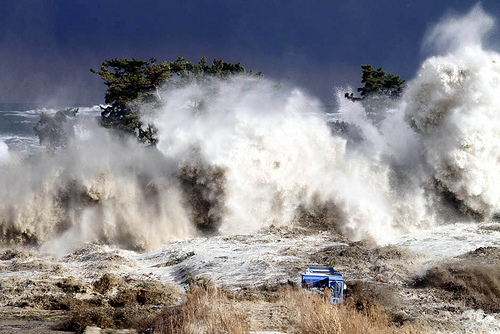
In the wake of the Fukushima nuclear accident in March, the International Atomic Energy Agency (IAEA) on Monday began a five-day Ministerial Conference on Nuclear Safety in Vienna. The objective, according to Director General Yukiya Amano, is to identify the ‘lessons learned’ from the accident and determine how to improve the Agency’s efforts to increase nuclear safety worldwide. To be sure, public confidence in the safety of nuclear power plants has plummeted in recent months, particularly in Japan and Germany where demonstrators have taken to the streets demanding nuclear energy be phased out.
A glance at the conference‘s stated aims and objectives, and at what the media has thus far reported, suggests that discussion of these ‘lessons learned’ has focused on : 1) safety in nuclear installations, 2) emergency preparedness, and, 3) effective first-response to accidents. While the savvy reader will know that the focus of international conferences can change as unpredictably as the weather, a distinct pattern is emerging.
On Monday, the conference adopted a Declaration on Nuclear Safety which expresses the participants’ resolve to enhance nuclear safety around the world. Among the measures it proposes are : 1) enhancing knowledge about nuclear safety; 2) promoting international cooperation and coordination around the issue; and, perhaps most relevantly to Fukushima, 3) meeting the public expectation to provide “factually correct information and assessments of nuclear accidents.”
But the response to the Fukushima accident must address not just the technical and political issues that have dominated the conference so far but, moreover, how we fundamentally think about nuclear safety. What the Japanese people experienced – an earthquake, followed by a tsunami, followed by a nuclear disaster – should, in this sense, be an urgent wake up call.
While we can’t do anything about mother-nature per se, we can always improve our protection against her deadly vicissitudes. To do this, political leaders and their civilian nuclear advisors must first recognize earthquakes, tsunamis, tornados and the like as significant risks in the first place — something which so far does not seem a priority for the Vienna conference.
In the aftermath of the Fukushima accident the IAEA set up a Fact Finding Mission, which found that “The tsunami waves overwhelmed the defenses of Fukushima Dai-ichi facility, which were only designed to withstand tsunami waves of a maximum of 5.7 meters high.”
However, the waves that impacted the Fukushima facility were estimated to have reached more than 14 meters. According to Michael Weightman, the Chief Inspector of nuclear installations in the UK, the waves reached areas deep within the units, causing an almost total loss of power, with little hope of outside assistance. As a result, the only way to avert a full nuclear meltdown was to cool the reactors with water dropped by helicopter. This ad hoc response is simply not worthy of a modern nuclear safety program, and it would be disappointing if the IAEA failed to use its unique platform to bring these issues up for public debate.
Though the IAEA aspires to become a global governing body on nuclear safety, nuclear energy will not be safe in any meaningful sense unless nuclear plants can stay standing when the ground starts to tremble. A plan to keep nuclear plants safe from this most fundamental of all threats should would be a fitting legacy for the Fukushima accident.
When the Conference discusses the role the IAEA should play in nuclear safety, questions should be raised about whether the IAEA should grow into a more normative, progressive role– proactively whipping up global nuclear safety debates, instead of merely seeking to build diplomatic consensus. Such a change of direction would force the IAEA to ask the hard questions that Fukushima, literally speaking, has unearthed.
The goal of such a debate should not be the so-called ‘dark green’ agenda of immediately phasing out nuclear energy altogether, as German energy politics might suggest; but, rather, working within the nuclear-friendly ‘light green’ approach (that we are stuck with for the foreseeable future) and making it as safe as possible. But if Fukushima has made one thing crystal clear it is that we have a long still way to go.
Day three of five. As long as there is time there is hope.

